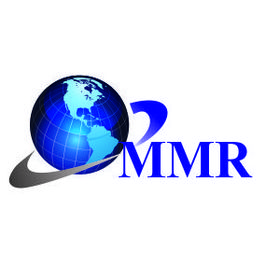
Global Sodium-Ion Battery Market Projected to Reach $1.84 Billion by 2030, Driven by Electric Vehicle Demand and Renewable Energy Integration
The Global Sodium-Ion Battery Market Growth is poised for substantial growth, with projections indicating an increase from $0.48 billion in 2023 to approximately $1.84 billion by 2030, reflecting a compound annual growth rate (CAGR) of 21.2% during the forecast period.
Get Your Free Sample Here: https://www.maximizemarketresearch.com/request-sample/147535/
Market Definition and Overview
Sodium-ion batteries are emerging as a promising alternative in the energy storage landscape, leveraging the abundant availability and accessibility of sodium. These batteries operate by storing energy in chemical bonds at the anode; during charging, sodium ions de-intercalate from the cathode and migrate to the anode. While they may not match the compactness of lithium-ion batteries, sodium-ion batteries offer advantages such as cost-effectiveness, thermal stability, and extended cycle life, making them particularly suitable for stationary applications and large-scale energy storage solutions.
Market Growth Drivers and Opportunities
Several key factors are propelling the growth of the sodium-ion battery market:
-
Surging Demand for Electric Vehicles (EVs): The global shift towards electrifying transportation to reduce carbon emissions has intensified the demand for efficient and sustainable battery technologies. Sodium-ion batteries, with their potential for higher capacities and environmental benefits, are emerging as a viable alternative to traditional lithium-ion cells in the EV sector.
-
Telecom and Data Center Adoption: The telecom industry and data centers are increasingly seeking energy-efficient solutions to mitigate rising fuel costs and enhance operational efficiency. Sodium-ion batteries, characterized by low internal resistance, high cycle rates, and non-flammable properties, are becoming the preferred choice for these sectors.
-
Cost Advantages Over Lithium-Ion Batteries: The escalating costs and limited availability of lithium have prompted the exploration of alternative battery technologies. Sodium-ion batteries, utilizing more abundant and cost-effective materials, offer a compelling economic advantage, driving their adoption across various applications.
-
Integration with Renewable Energy Sources: The global emphasis on renewable energy integration necessitates efficient and scalable energy storage solutions. Sodium-ion batteries, with their stability and capacity, are well-suited to support the intermittency of renewable energy sources like solar and wind power.
Segmentation Analysis
The sodium-ion battery market can be segmented based on type, technology, and end-user applications:
By Type:
-
Sodium-Sulfur Batteries: These batteries operate at elevated temperatures and are primarily used in large-scale energy storage applications due to their high energy density and efficiency.
-
Sodium-Salt Batteries (Zebra Batteries): Utilizing a molten salt electrolyte, these batteries are known for their durability and are employed in applications requiring long life cycles.
By Technology:
-
Aqueous Electrolyte Batteries: Featuring a water-based electrolyte, these batteries offer safety advantages and are suitable for stationary energy storage applications.
-
Non-Aqueous Electrolyte Batteries: Utilizing organic solvents as electrolytes, these batteries provide higher energy densities, making them suitable for applications where space and weight are critical considerations.
By End-User:
-
Automotive: The burgeoning electric vehicle market is exploring sodium-ion batteries as a cost-effective and sustainable alternative to lithium-ion batteries.
-
Energy Storage: Utilities and renewable energy providers are adopting sodium-ion batteries for grid stabilization and energy storage solutions.
-
Consumer Electronics: While currently less prevalent, there is potential for sodium-ion batteries to penetrate the consumer electronics market as technology advances.
Country-Level Analysis
United States:
In the United States, the sodium-ion battery market is gaining momentum, driven by:
-
Strategic Investments: Companies like Natron Energy are spearheading significant projects, such as the development of a 24 GWh sodium-ion battery factory in North Carolina, valued at $1.4 billion. This initiative underscores the growing demand for energy storage solutions, bolstered by favorable tax credits from legislative acts like the 2022 Inflation Reduction Act.
-
Energy Storage Initiatives: The volatility in global lithium prices has heightened interest in alternative battery technologies. Sodium-ion batteries, capable of utilizing locally sourced materials like aluminum and sodium, present a cost-effective and domestically viable solution for energy storage needs.
Germany:
Germany represents a key market for sodium-ion batteries in Europe, influenced by:
-
Renewable Energy Integration: Germany’s commitment to renewable energy sources necessitates efficient energy storage solutions. Sodium-ion batteries, with their stability and scalability, align with the country’s energy transition goals.
-
Automotive Industry Innovation: As a leader in automotive manufacturing, Germany’s exploration of sodium-ion batteries for electric vehicles reflects the industry’s pursuit of sustainable and cost-effective battery technologies.
Competitive Landscape
The sodium-ion battery market is characterized by dynamic developments and strategic initiatives:
-
Natron Energy: Leading the charge in the United States, Natron Energy’s ambitious project to establish a 24 GWh sodium-ion battery factory in North Carolina highlights the company’s commitment to advancing sodium-ion technology and meeting the growing demand for energy storage solutions.
-
Chinese Manufacturers: China dominates the sodium-ion battery manufacturing landscape, accounting for over 90% of the global capacity, estimated at approximately 40 GWh as of 2023. This figure is projected to grow over fourfold by 2030, with Chinese companies leading large-scale production and deployment.
-
European Collaborations: European entities are engaging in collaborative efforts to develop and commercialize sodium-ion battery technologies, aiming to diversify energy storage solutions and reduce reliance on lithium-based batteries.
If you have any questions regarding this report, please reach out to us through the link provided below: https://www.maximizemarketresearch.com/market-report/sodium-ion-battery-market/147535/
Conclusion
The global sodium-ion battery market is on a trajectory of rapid growth, driven by the increasing demand for electric vehicles, renewable energy integration, and the pursuit of cost-effective and sustainable energy storage solutions. With significant investments and technological advancements, sodium-ion batteries are poised to play a crucial role in the evolving energy landscape, offering a viable alternative to traditional lithium-ion batteries across various applications.
Other Relevant Reports:
Graphene Electronics Market https://www.maximizemarketresearch.com/market-report/global-graphene-electronics-market/29628/
level sensors market https://www.maximizemarketresearch.com/market-report/level-sensor-market/2838/
India Lighting Market https://www.maximizemarketresearch.com/market-report/india-lighting-market/127659







